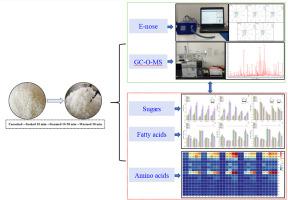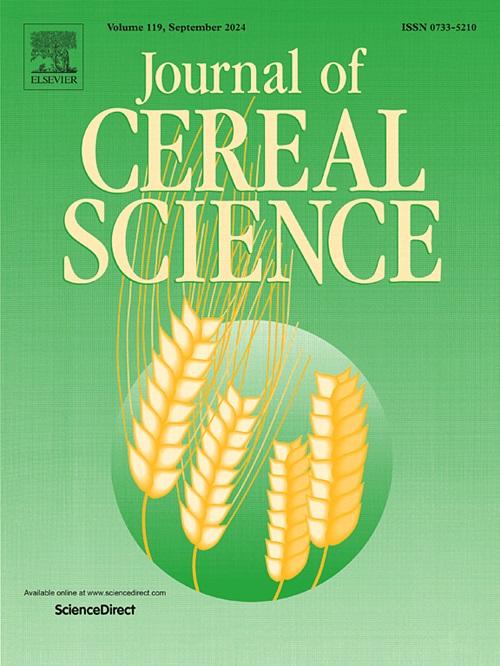Dynamic changes in aroma compounds and precursor substances during rice cooking
IF 3.9
2区 农林科学
Q2 FOOD SCIENCE & TECHNOLOGY
引用次数: 0
Abstract
Cooking is a key process in forming cooked rice flavor, and more data on aroma compounds should be needed during rice cooking. This paper tracked dynamic changes in aroma compounds, sugars, amino acids, and fatty acids during cooking. After soaking, the content of glucose, fructose, oleic acid, and linoleic acid increased. In the hydrothermal cooking stage, glucose, aspartic acid, glutamic acid, and alanine increased significantly (p < 0.05), while fructose, oleic acid, and linoleic acid first increased and then decreased. In raw rice and soaked rice, alkanes and alkenes were the main volatile compounds, and the content of hydrocarbon compounds decreased in the hydrothermal cooking stage, and many aldehydes, alcohols, ketones, and furan compounds were generated. A total of 28 aroma compounds were sniffed by GC-O-MS, and 13 aroma compounds with OAV >1 were screened out. These results showed that raw rice and soaked rice had similar aroma characteristics and aroma precursor substances that mainly accumulated in the SO10 or ST10 stage, and hydrothermal cooking was the key process of rice aroma formation.

大米烹饪过程中香气化合物和前体物质的动态变化
烹饪是形成熟米风味的一个关键过程,因此需要更多有关大米烹饪过程中香气化合物的数据。本文跟踪了烹饪过程中香气化合物、糖类、氨基酸和脂肪酸的动态变化。浸泡后,葡萄糖、果糖、油酸和亚油酸的含量增加。在水热蒸煮阶段,葡萄糖、天门冬氨酸、谷氨酸和丙氨酸显著增加(p <0.05),而果糖、油酸和亚油酸先增加后减少。在生米和浸泡米中,烷烃和烯烃是主要的挥发性化合物,在水热蒸煮阶段,烃类化合物的含量下降,并产生了许多醛类、醇类、酮类和呋喃类化合物。通过 GC-O-MS 共嗅出 28 种香气化合物,筛选出 13 种 OAV >1 的香气化合物。这些结果表明,生米和浸泡米具有相似的香气特征和香气前体物质,主要在 SO10 或 ST10 阶段积累,水热蒸煮是稻米香气形成的关键过程。
本文章由计算机程序翻译,如有差异,请以英文原文为准。
求助全文
约1分钟内获得全文
求助全文
来源期刊

Journal of Cereal Science
工程技术-食品科技
CiteScore
7.80
自引率
2.60%
发文量
163
审稿时长
38 days
期刊介绍:
The Journal of Cereal Science was established in 1983 to provide an International forum for the publication of original research papers of high standing covering all aspects of cereal science related to the functional and nutritional quality of cereal grains (true cereals - members of the Poaceae family and starchy pseudocereals - members of the Amaranthaceae, Chenopodiaceae and Polygonaceae families) and their products, in relation to the cereals used. The journal also publishes concise and critical review articles appraising the status and future directions of specific areas of cereal science and short communications that present news of important advances in research. The journal aims at topicality and at providing comprehensive coverage of progress in the field.
 求助内容:
求助内容: 应助结果提醒方式:
应助结果提醒方式:


